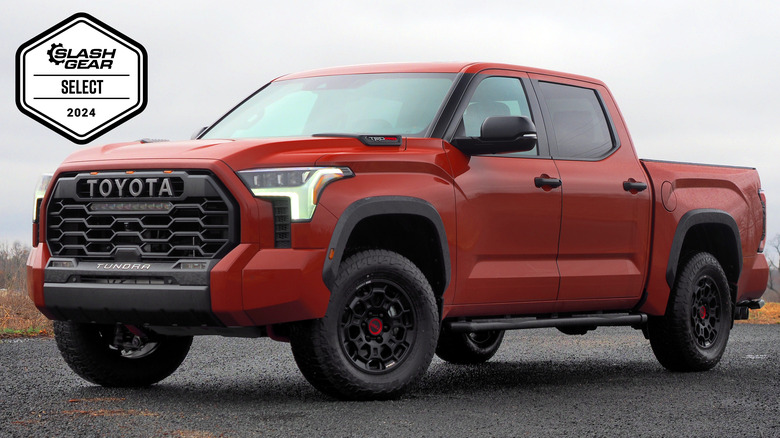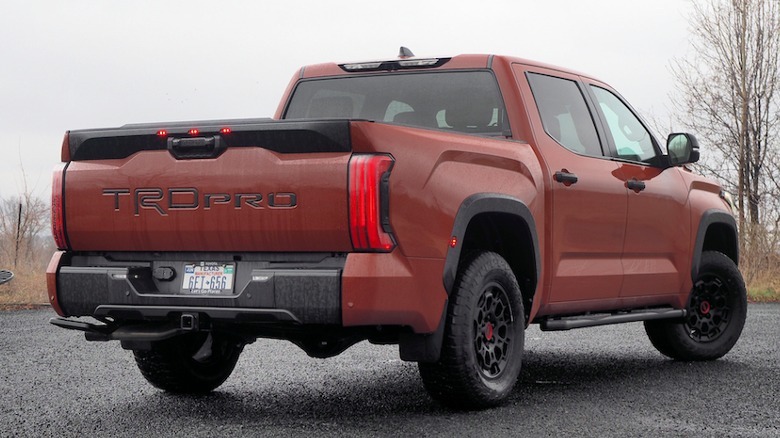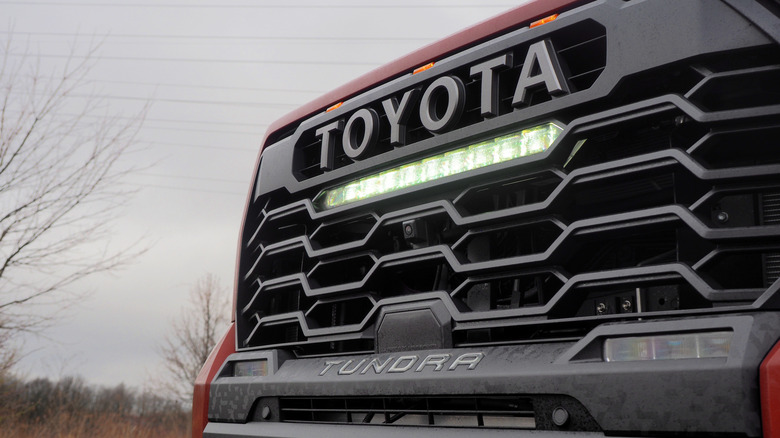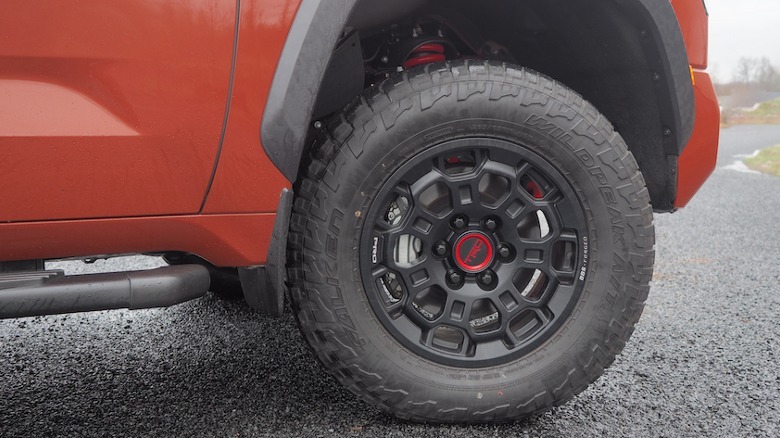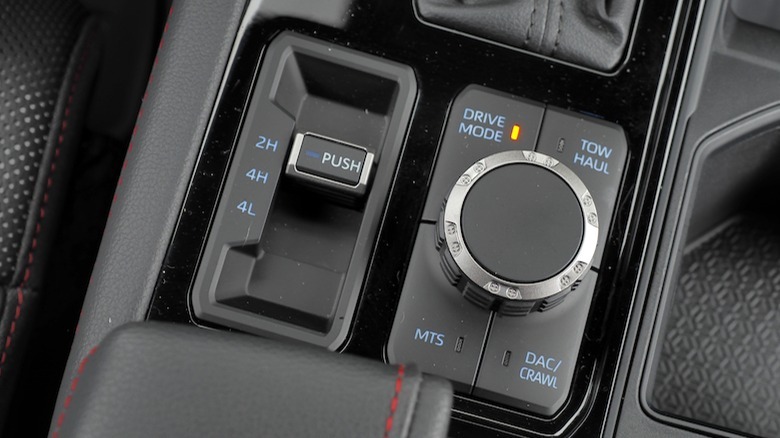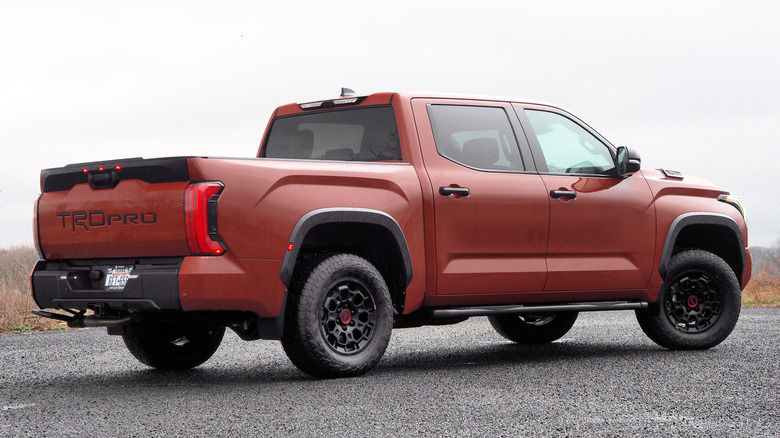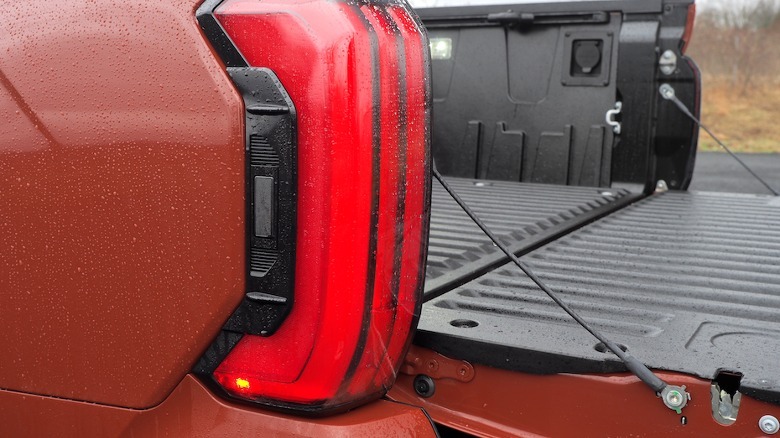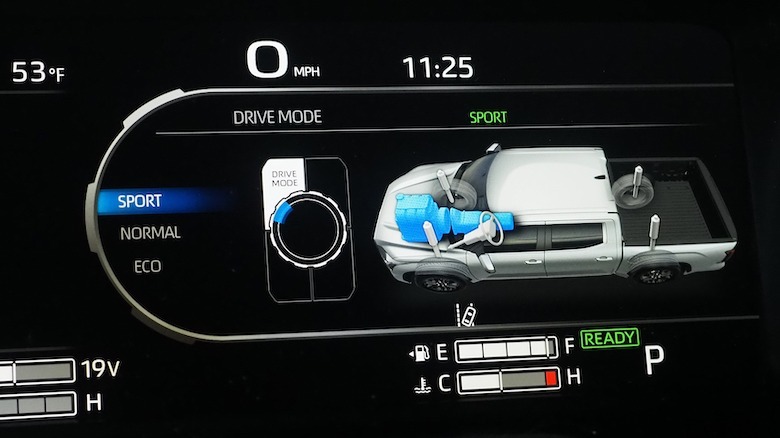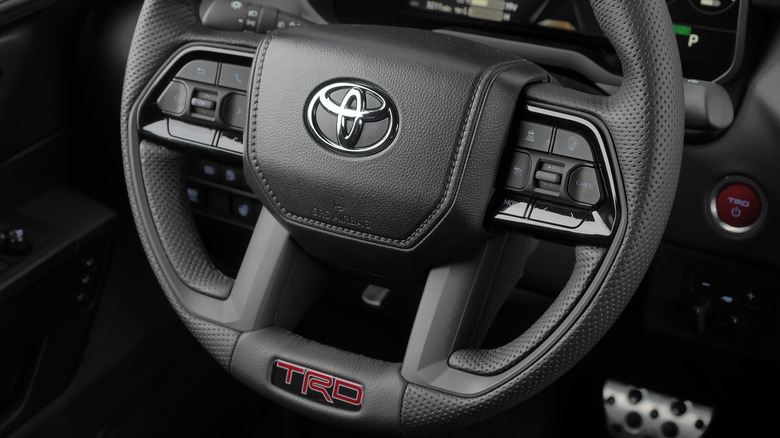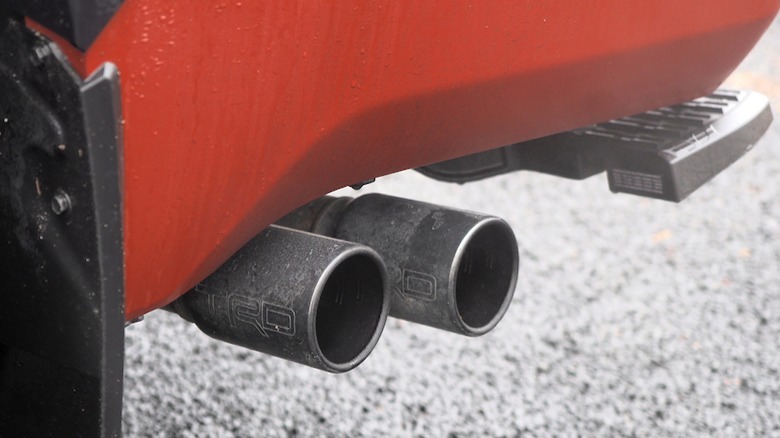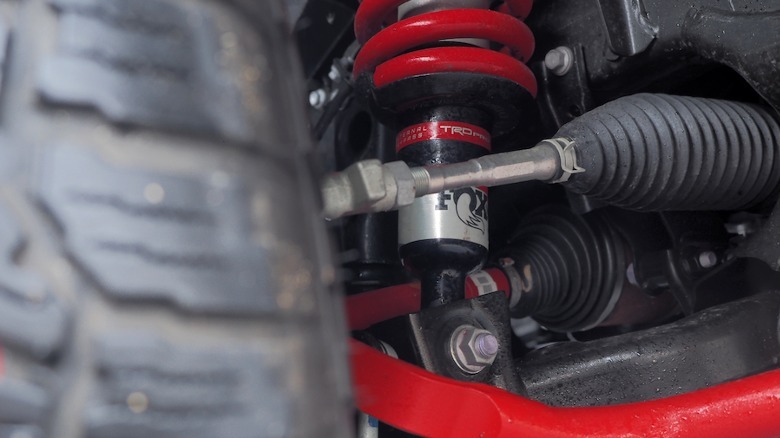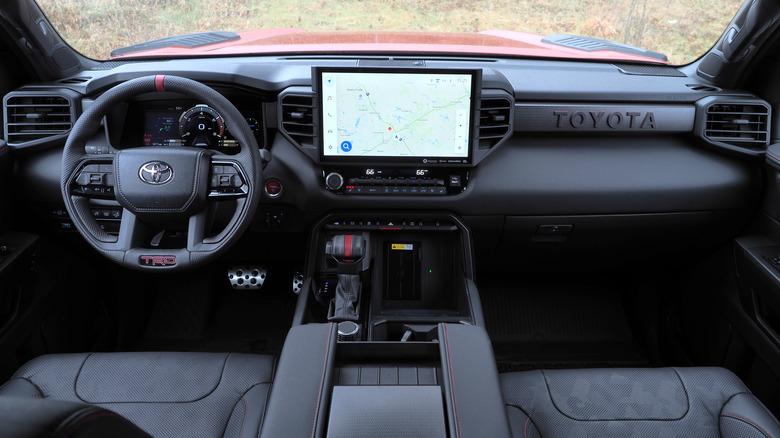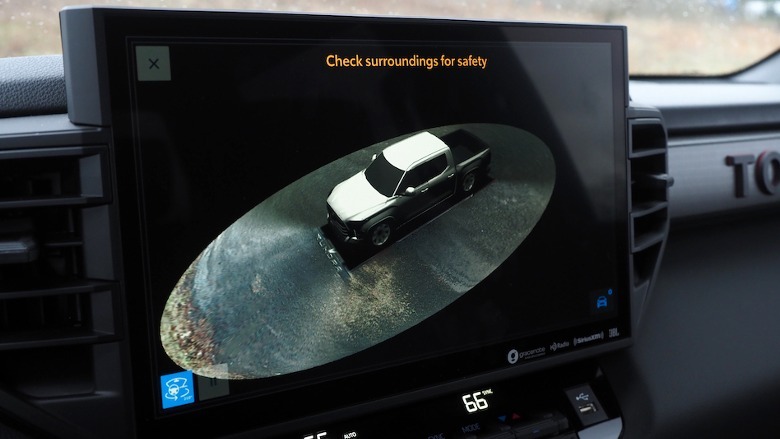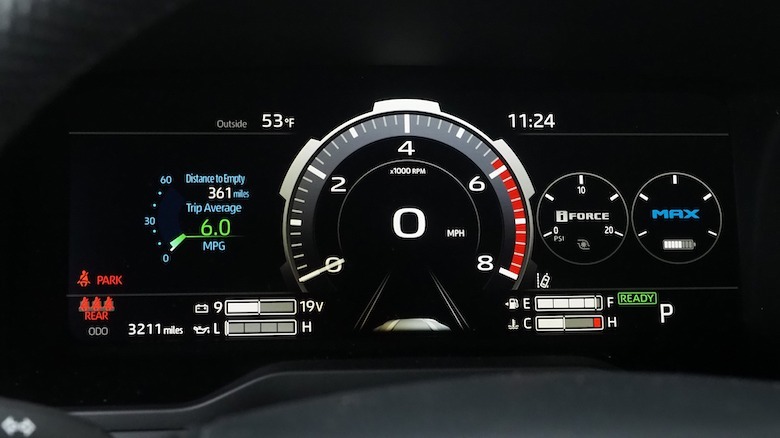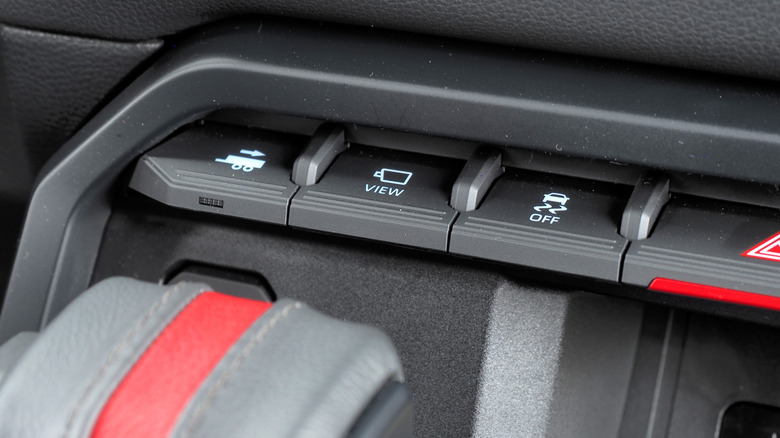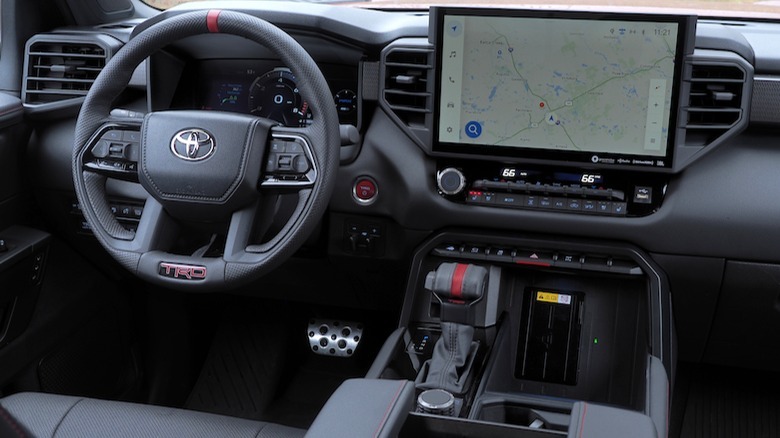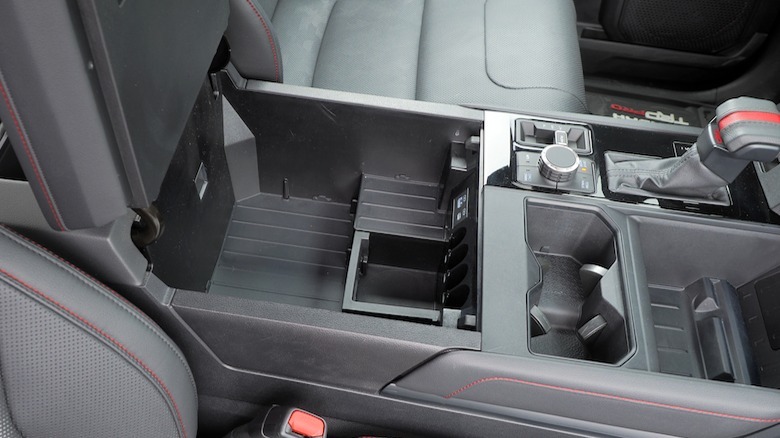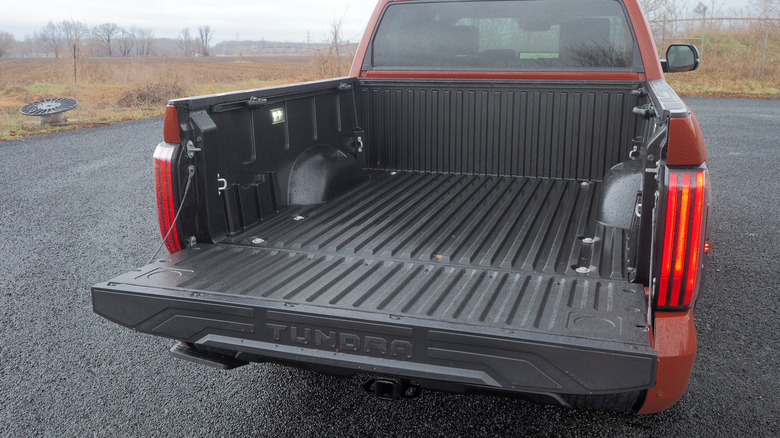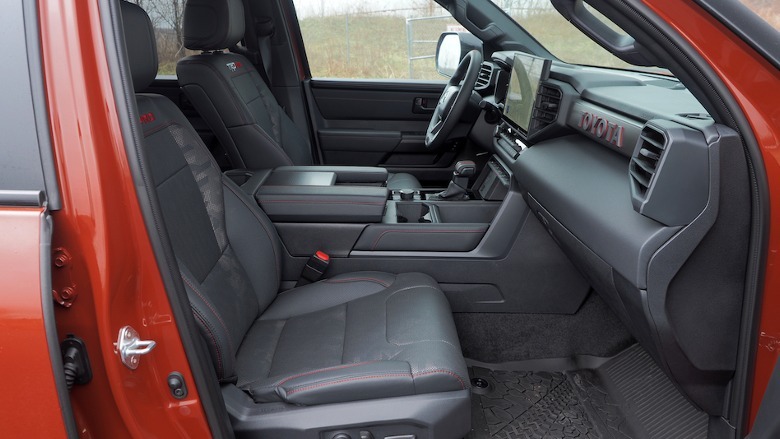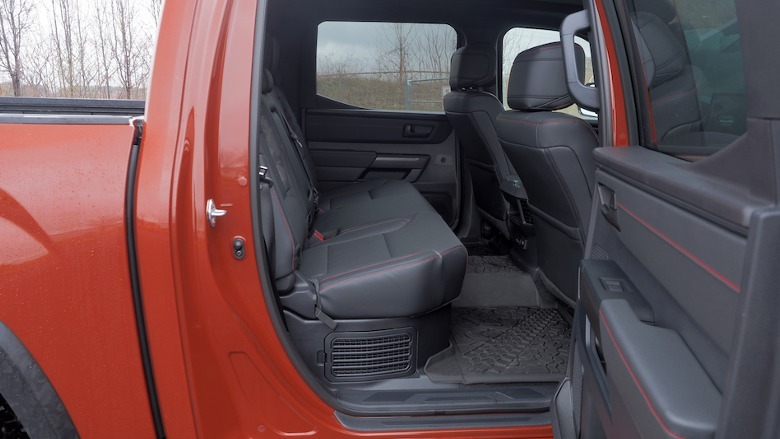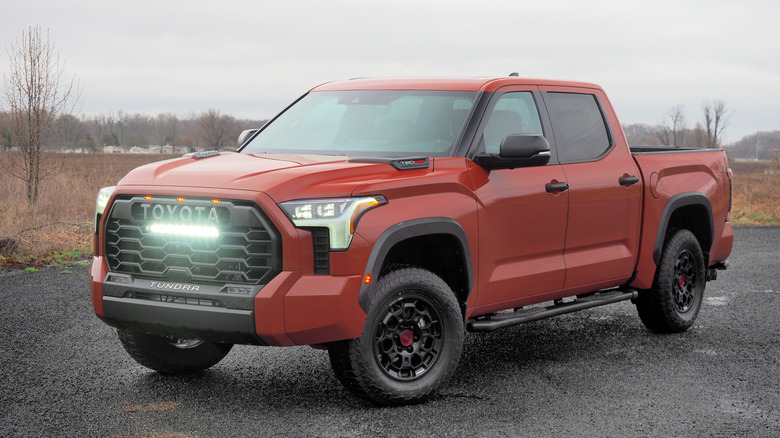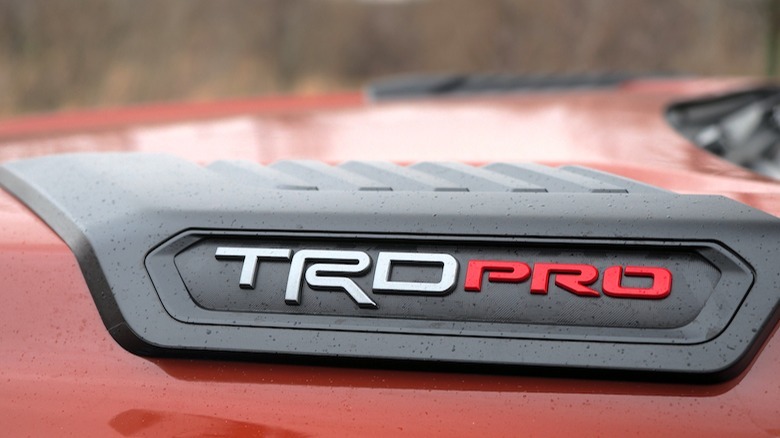2024 Toyota Tundra TRD Pro Hybrid Review: Oddly Thirsty And Surprisingly Sporty
- Hybrid V6 drivetrain is unexpectedly fast
- High-tech dashboard with easy-to-use infotainment
- Solid tow rating
- Middling fuel economy
- TRD Pro suspension can be bouncy
- Off-road-focused rivals offer more ability
Toyota may have pushed hybrids into the mainstream, but while electrified engines may typically be associated with boosting fuel economy, the i-FORCE MAX twin-turbo V6 hybrid in the 2024 Tundra is far from Prius territory. Instead, Toyota is relying on its electric motor to help offset its cylinder shortage compared to the V8 many rivals offer. That means torque, not miles per gallon (mpg), is the focus here.
Indeed, select trims of Toyota's truck that lack the electric motor — that's sandwiched between the gas engine and the 10-speed automatic transmission in the hybrid model — match, or even exceed the hybrid's thirst on the road. They can also exceed its tow rating and its payload.
Without a particular frugality or practicality argument to make (or, to be fair, no apparent inclination on Toyota's part to make that argument about the i-FORCE MAX either), the 2024 Tundra TRD Pro places its bets on off-road talent and a recent gadget glow-up.
Ostentation comes as standard
The standard Tundra is unafraid of leaning into its beefy proportions, and the TRD Pro only exaggerates that. Toyota builds out the heavy sculpting with an even more imposing grille — complete with an LED light bar, which requires you to have the high beams on before you can turn it on — along with 18-inch matte black BBS alloy wheels and tough black plastic detailing. I don't know if the result is handsome, per se, but it certainly makes a statement.
That statement isn't all show, either. TRD Pro trim gets a 1.1-inch front axle lift and special suspension, along with 4WD as standard, an electronically-controlled transfer case, and a locking rear differential. There's also Toyota's Multi-Terrain Select drive mode system, with Tow and Haul modes, plus Crawl Control to make navigating tricky off-road courses more straightforward.
Toyota would get bonus points for offering a range of colors that strays beyond the usual truck fare, but only a subset is available for the TRD Pro specifically. As well as the fetchingly terracotta-like Terra finish of this particular example, there's a moody Magnetic Gray Metallic and then black or white. If you prefer the bright red or orange Toyota offers, you'll need to pick a different trim.
Heavy on torque, heavy on gas
The result of Toyota's hybridization is 437 horsepower and 583 lb-ft of torque, the latter up more than 100 lb-ft compared to the non-electrified i-FORCE engine. This TRD Pro trim has a maximum tow rating of 11,175 pounds and a maximum payload rating of 1,600 pounds. It's worth noting that you don't necessarily get the biggest tow or cargo ratings just because you opt for the most potent engine: a Tundra Limited with the regular turbo V6, for example, has a payload of 1,740 pounds.
According to the EPA, the i-FORCE MAX in TRD Pro form can do 18 mpg in the city, 20 mpg on the highway, and 19 mpg combined. You pay a penalty for that rugged rubber: the same engine in the Tundra Capstone trim is rated at 19 mpg city, 22 mpg highway, and 20 mpg combined.
Full-size trucks aren't generally known for being frugal, and the Tundra TRD Pro doesn't buck that. In my own, mixed driving I saw 14.5 mpg combined. A jaunt of highway-only driving saw the Toyota hover just a couple of points above that on average.
Wait, this thing is fast
Toyota has only itself to blame for those middling real-world numbers, frankly: the hybrid Tundra is just too playful to drive more economically. Though the electric motor may only pack a fraction of the total punch that the V6 musters, the early arrival of its 184 lb-ft of torque makes a noticeable impact in urban driving. The merest of gas pedal grazes sets the burly Tundra surging ahead, eschewing the TRD Pro's 6,000+ pound curb weight without even needing to switch to Sport mode.
It's not an exceptionally quiet drivetrain, though road noise from the off-road tires contributes to that. It can be bouncy, too: the downside to the TRD Pro's particular suspension tune making comfort compromises, especially noticeable on undulating surfaces where one passenger requested a slower pace so as to avoid seasickness. On concrete highways, vibrations above 70 mph turn the cabin into a rock-shaker.
The other downside is maneuverability. The TRD Pro's upgrades may leave it more adept away from asphalt — the 2.5-inch FOX Internal Bypass coil-overs and rear remote-reservoir shocks shake off muddy, rutted backroads with admirable ease — but they also add more than a foot to the curb-to-curb turning circle diameter. You definitely notice that while trying to navigate tighter parking lots.
Recent gadget glow-up does the job
Whether you're a fan of big touchscreens or big button counts, Toyota has you covered: the Tundra has both. Though the lower SR and SR5 trims have an 8-inch infotainment screen, once you get to Limited grade and above (including every hybrid trim) that's swapped out for a 14-inch version. It's genuinely huge, in truck world at least, and coupled with the breadth of the Tundra's dashboard it can leave buttons on the far side a stretch to reach.
Toyota's newest infotainment software is present, correct, and very welcome: it's clean and easy to navigate, with a solid voice control system. Wireless Apple CarPlay and Android Auto are supported, and the TRD Pro leapfrogs the base 6-speaker and mid-tier 9-speaker audio, in favor of a 12-speaker JBL-branded system with a subwoofer. A wireless phone charging pad is in the center console, and there are USB charging ports — in USB-A and USB-C flavors — front and rear.
SR and SR5 trims get largely analog gauges with a dinky 4.2-inch display. Anything above that enjoys a 12.3-inch fully digital cluster, with serviceable (if not quite as sleek as the center touchscreen) graphics. A head-up display is standard on 1794 Limited Edition and Capstone trims, but unavailable on the TRD Pro.
Toyota hasn't forgotten physical controls
The climate control gets dedicated buttons — alongside a physical volume knob — and another row of toggles take care of things like the diff-lock and (large and most-welcome) a shortcut to bring up the 360-degree cameras. Considering the scale of the Tundra, and how its slab-sided proportions truncate your lines of sight, being able to rapidly summon a bird's eye view is great.
Controls to switch drive modes — including stepping between 2L, 2H, and 4H — are down by the physical shifter. Unfortunately, Toyota treats the panel to the lower left of the steering wheel as an overflow for buttons. The heated steering wheel control sits alongside the auto high-beams button, the ODO Trip reset, and the override for the parking sensor alerts, together with the TRD Light Bar button. It'll probably take a while before you memorize which is which, at least if you want to reach down and switch on the heated wheel without looking while you're driving.
As for storage and cubbies, there's a reasonably-sized bin between the front seats, though the Tundra's door pockets are a little snug. In the rear, the 60/40 split bench folds up, though — since that's where Toyota tucks the hybrid system's battery — you don't get the storage bin there that non-hybrid versions of the truck include.
Rivals feel more imaginative
Toyota offers a single bed/cab combo with the Tundra TRD Pro, a CrewMax four-door, five-seater, and a 5.5 foot aluminum-reinforced composite bed. Other trims can be had with a Double Cab instead, and a 6.5 or even 8.1 foot bed.
The TRD Pro gets a 120V/400W outlet in the bed, plus LED lighting – paid extras on lower trims — while the drop-down BedStep is a $424 option. There's no origami-esque multi-folding tailgate, like GMC offers, nor under-bed storage like in a Honda Ridgeline; don't even think of gadgets like the built-in air compressor in Rivian's R1T. Toyota integrates tailgate release buttons into the taillamp clusters, though, which is a useful touch: jabbing one with your elbow while your arms are full is very convenient.
Similarly helpful is Toyota's Safety Sense 2.5 ADAS suite, standard on all Tundra trims. That includes adaptive cross-control, lane-departure alerts with steering assist, lane tracing assist, front collision assist with pedestrian detection, and automatic high beams. Sadly not every trim gets blind spot alerts, nor front and rear parking sensors with auto-brake, which seems miserly (and generally unwise) given the scale of the truck.
2024 Toyota Tundra TRD Pro Verdict
The Tundra is a big pickup, and the TRD Pro carries an equally big price tag. With the dash cam ($499) and some extra exterior trim, this particular Terra example lands at $75,807 including destination. That puts it within spitting distance of GMC's 2024 Sierra 1500 AT4X, and not that far off the lavishly-equipped 2024 GMC Sierra 1500 Denali Ultimate. Or, you could save a little money and go for the 2024 Chevrolet Silverado 1500 ZR2, with its delightful turbo-diesel engine.
The ZR2 is rated to tow less, but its wildly clever dampers make for a better all-round ride. It also pairs them with more ground clearance and more rugged outfitting, should you really be inclined to go off-road. While it may not be a hybrid like the Toyota, it's still rated at 21 mpg combined, too.
Around town, the Tundra's perkiness makes it an unexpectedly rewarding drive. You get that in the cheaper Limited hybrid trim, mind, which though not quite as well-equipped (or as ruggedized) as the TRD Pro, does have the advantage of starting at $62,475 including destination. That seems a lot more reasonable a sticker for a full-size truck that puts its electrification to work delivering performance rather than promising economy gains.
